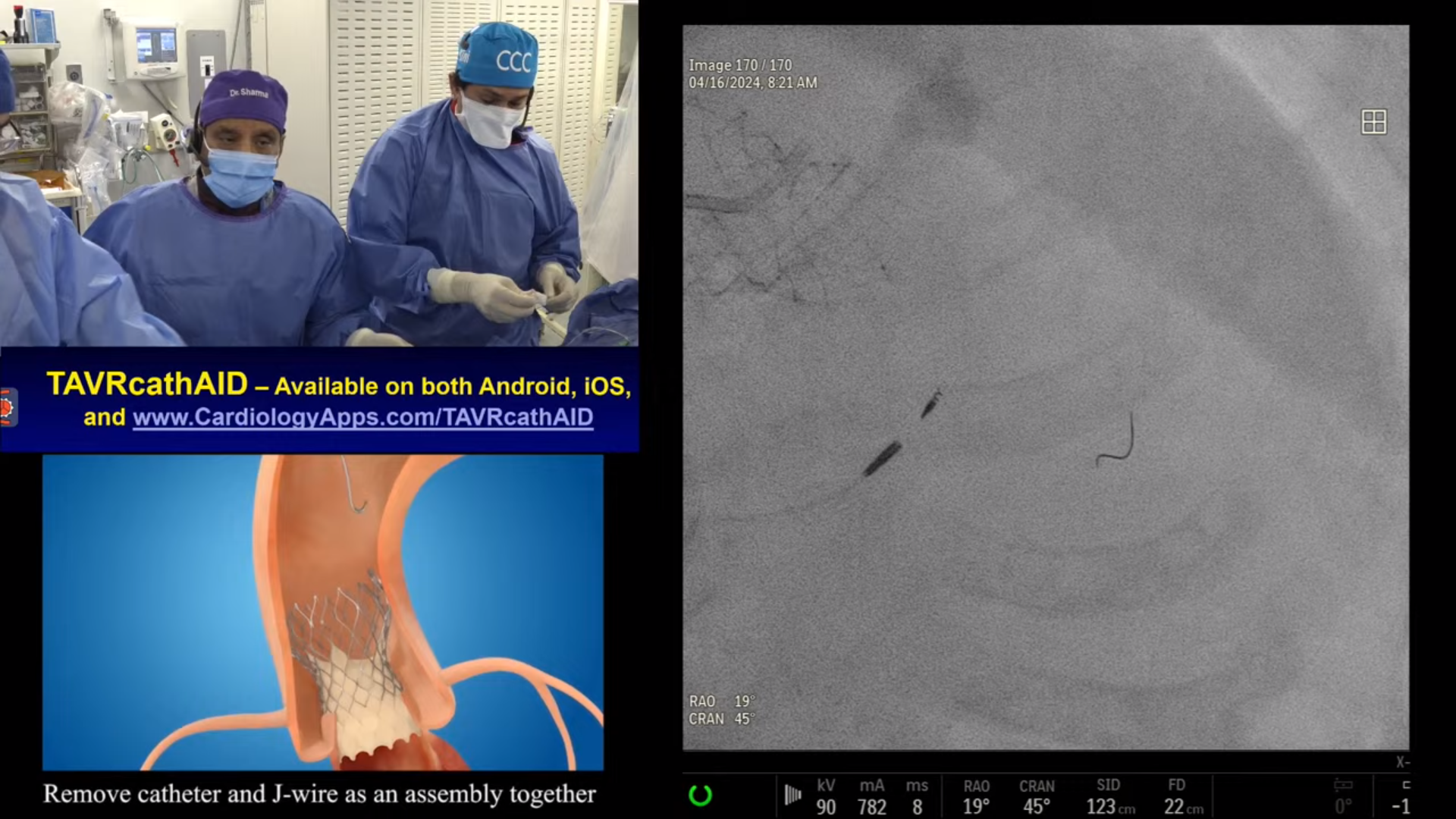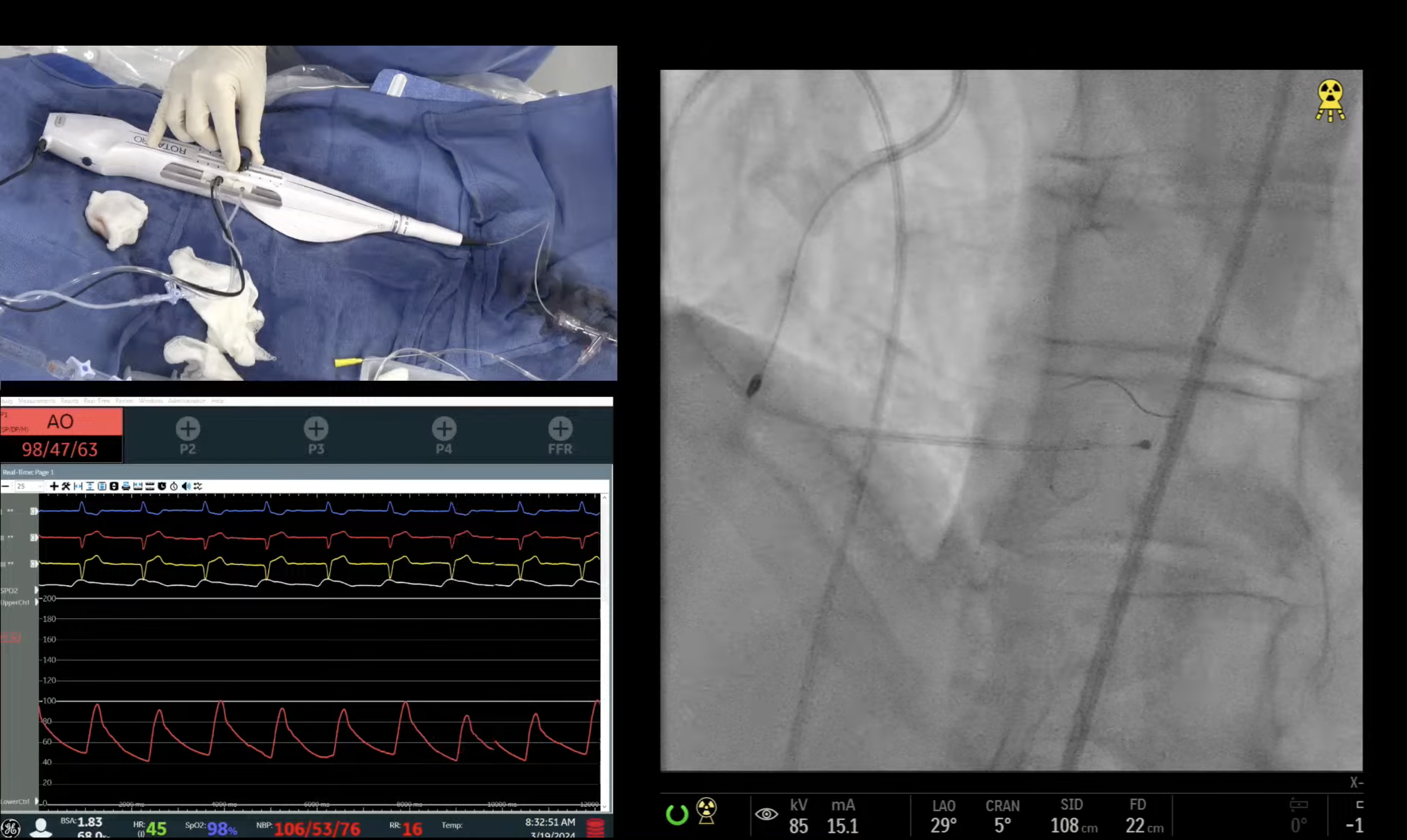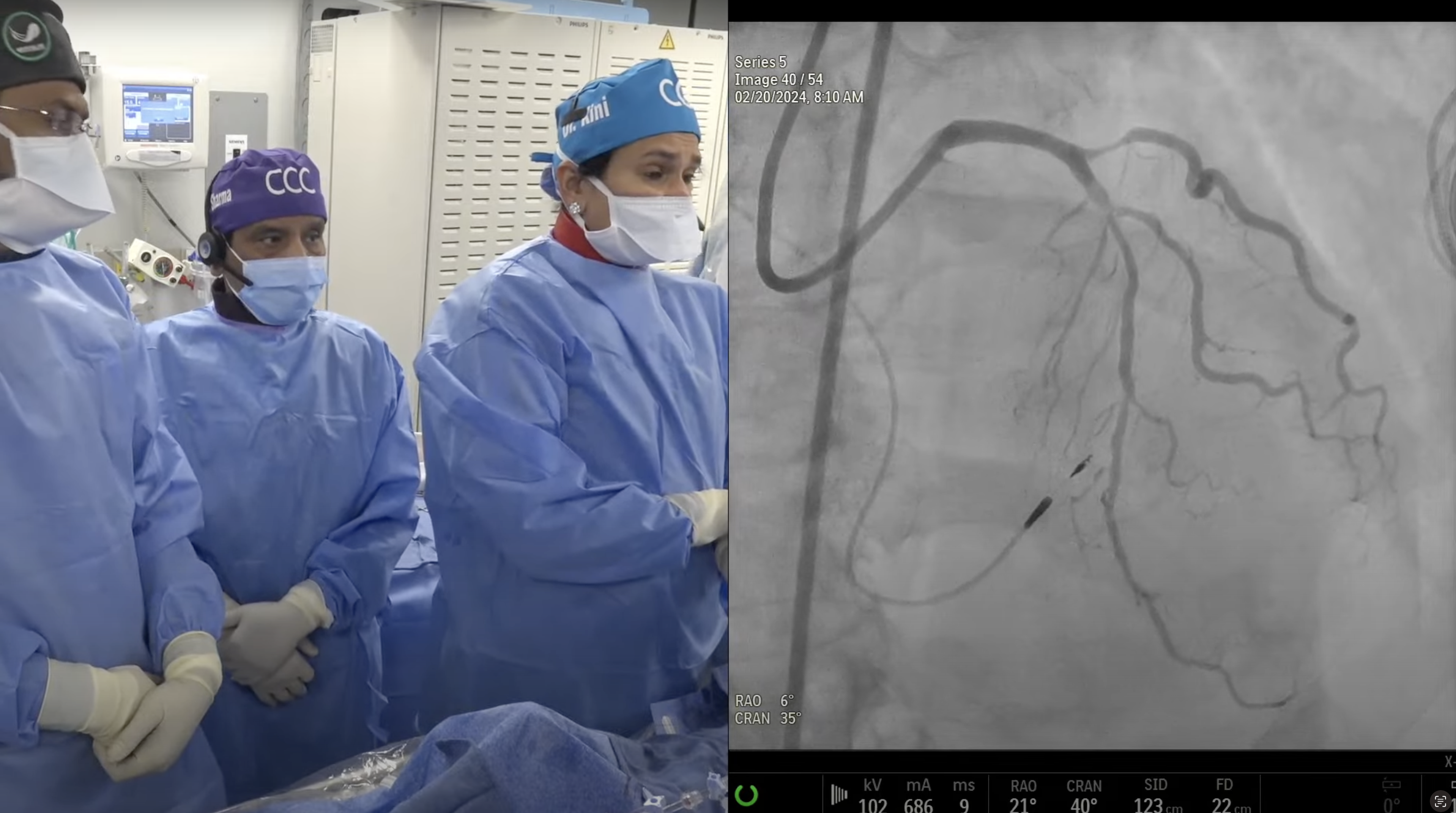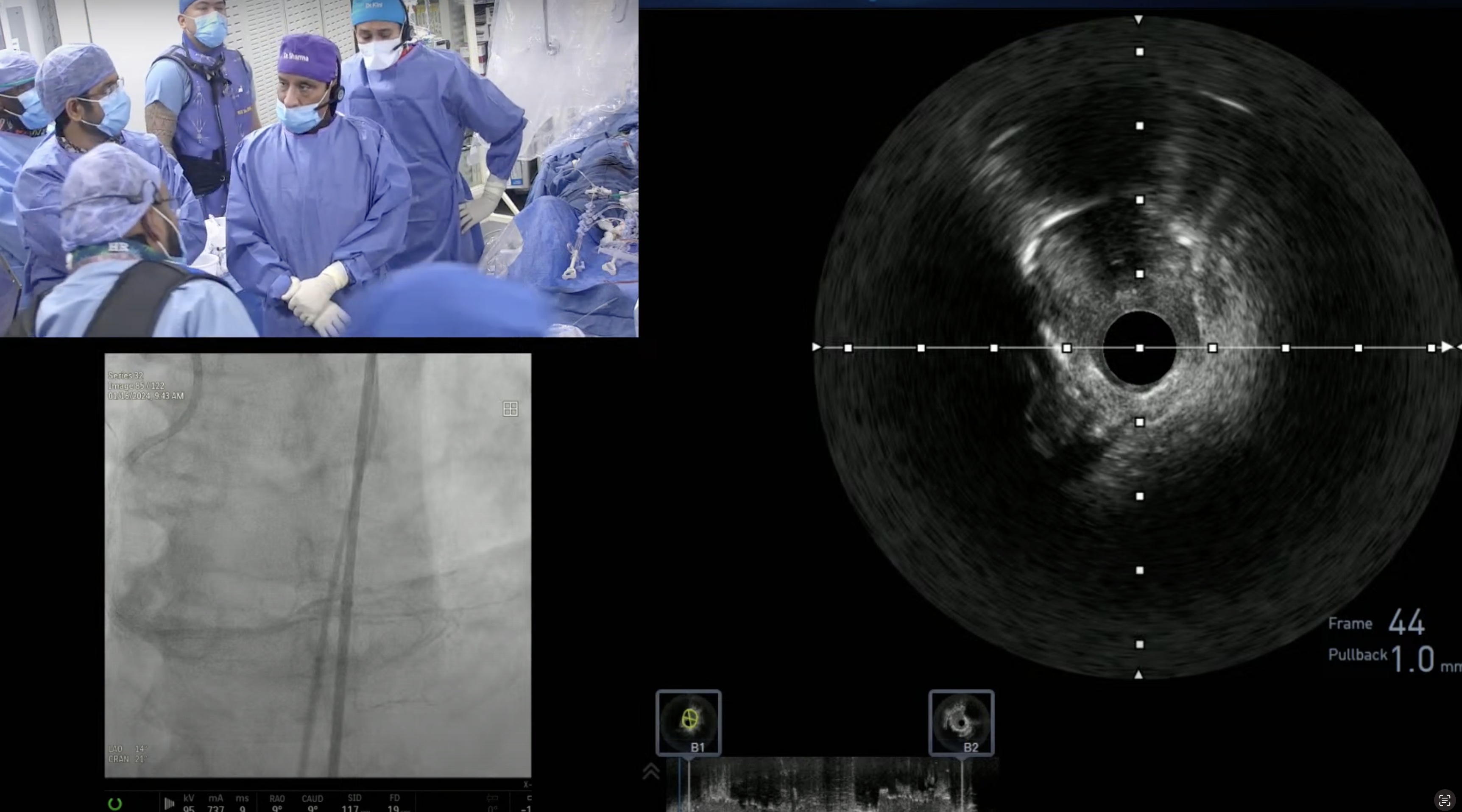76 year old male with severe extensive aneurysmal PAD, presented with new onset CCS Class II angina and positive SPECT MPI for moderate inferior ischemia. A Cardiac Cath on March 13, 2018 revealed 3V + LM CAD: 70% distal LM bifurcation (Medina 1,1,1), 90% proximal LAD, 80% proximal LCx with small subtotal OM, 90% RCA-RPL2, SYNTAX Score of 28 and LVEF 70%. Patient underwent Heart Team discussion and high risk PCI was recommended based on the patient’s wishes. Now planned for IVUS guided unprotected left main bifurcation PCI using DK Crush technique via radial access.
Moderator: Sameer Mehta, MD
Q&A
Q
In what situations do you feel Mini Crush techniques is superior to DK crush?
A.
Both Mini Crush and DK crush are two good bifurcation techniques with excellent side branch ostial coverage. Outcomes are similar after these 2 techniques with major difference of 3 less steps in Mini Crush vs DK crush and hence is the preferred bifurcation 2-stent technique in our Cath Lab.
Q
Do you prefer any particular DES for DK crush?
A.
All current DES are suitable for DK Crush technique with my personal favorite being Xience DES for this purpose.
Q
Are there situations where you will completely avoid DK crush?
A.
DK Crush should be avoided in small sidebranches (<2.25mm), angle >90degree and in ACS/MI setting.
Q
Regarding gender issues in Interventional Cardiology, are there really barriers in the United States that prevent women from practicing Interventional Cardiology?
A.
Absolutely no gender barriers for Interventional cardiology except that this sub speciality is very demanding and may take a significant toll on the family life. Hence less women cardiologists want to become Interventionalist (<15% as of a recent survey).
Q
Or is it personal choices to avoid radiation and bear children?
A.
The factors of radiation exposure with consequences of child bearing and wearing lead apron for prolonged hours, are the two main reasons I have encountered while interviewing women cardiology fellows, biasing them against selecting Interventional cardiology as the their future subspecialty of choice.
Q
Of the various reasons you pointed in your slide for reluctance to utilize greater wrist access, which appears the most significant?
A.
Poor guide support for radial access to engage the grafts is the most common reason for the operator not to select radial access, especially with the low volume operators. Of course if radial arteries have been used as the graft conduits, then radial access is not even being entertained and operators are reluctant to use ulnar artery in these cases for fear of major vascular complications, in case ulnar artery is traumatized.
Q
If today's case was not constrained by PVD and peripheral aneurysm, would you have done the same case easier with femoral access?
A.
I will say absolutely yes for the femoral access over radial access in today’s case for bifurcation ULM PCI due to complexity of bifurcation.
Q
How much is the crossover rate in your lab from wrist to femoral access?
A.
At present crossover from radial access to femoral access in our lab is 2-3% only; largely due to increasing experience and selecting alternate radials, if one fails. Last 2 months, our radial PCI is being done in 40-42% of cases.
Q
Has your lab performed a comparison between Radial and Femoral radiation exposure to the patient/and or the operator?
A.
We have not done formal analysis of radiation exposure between two vascular access strategies. But I am sure our data will be the similar to the reported literature that higher radiation exposure to the pt and operators with radial access over femoral access especially in complex cases like today.
Q
Not much has been written about the volume of radio contrast use between Wrist and Femoral access.
A.
Few studies have reported lower contrast use with radial vs femoral access but I am not fully convinced as it seems to be higher contrast use with radial access over femoral access PCI in our lab.






Brilliant example with step by step approach of DK crush. Very useful
Thanks a lot.
Dr Mamoon Qadir
Interventional Cardiologist
Kulsum International Hospital
Islamabad Pakistan
Short 7f sheath partially in will it reduce radial spasm. Any difference in anti spasmodic strategy.
Why not angiosculp instead of CB. IVUS of Lcx prior to stenting.Kissing balloon before stenting.
Can we position the balloon in LAD while standing LCX
App says NC balloon for crossing SB. Profile of NC balloon is big.? .Subsequent dilatation can be done with NC.intial dilatation with semicompliant balloon. What is your opinion
Final kissing with NC nominal vs high pressure
thank you great case, diagram very helpful
What factors do you consider in selecting balloon sizes for FKBI?